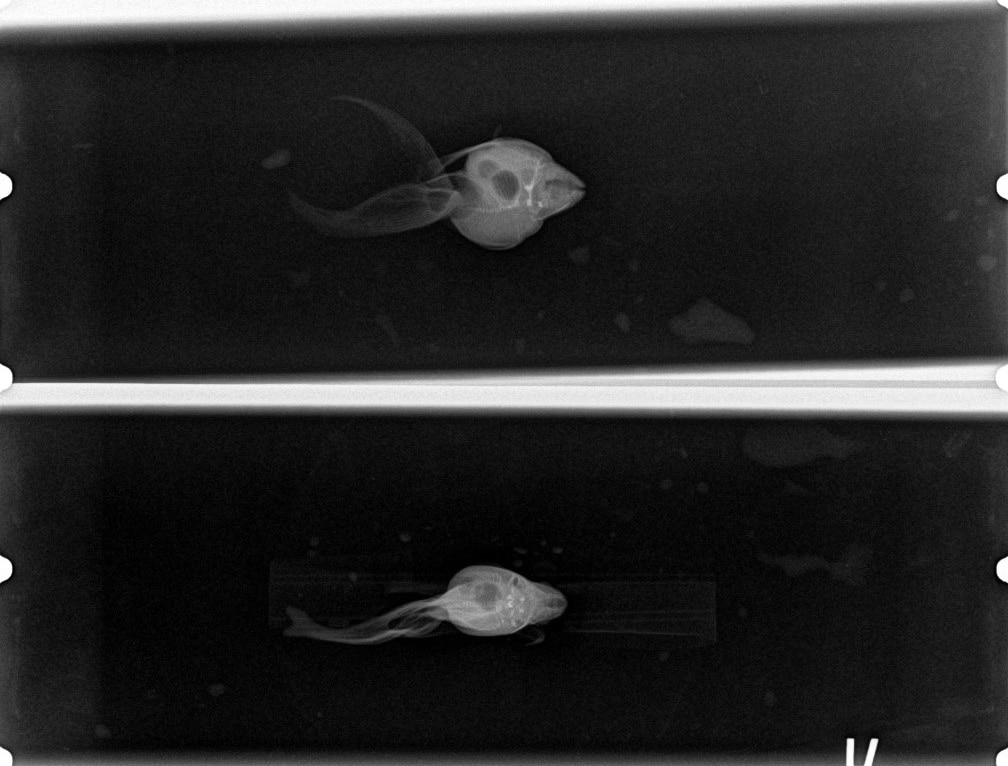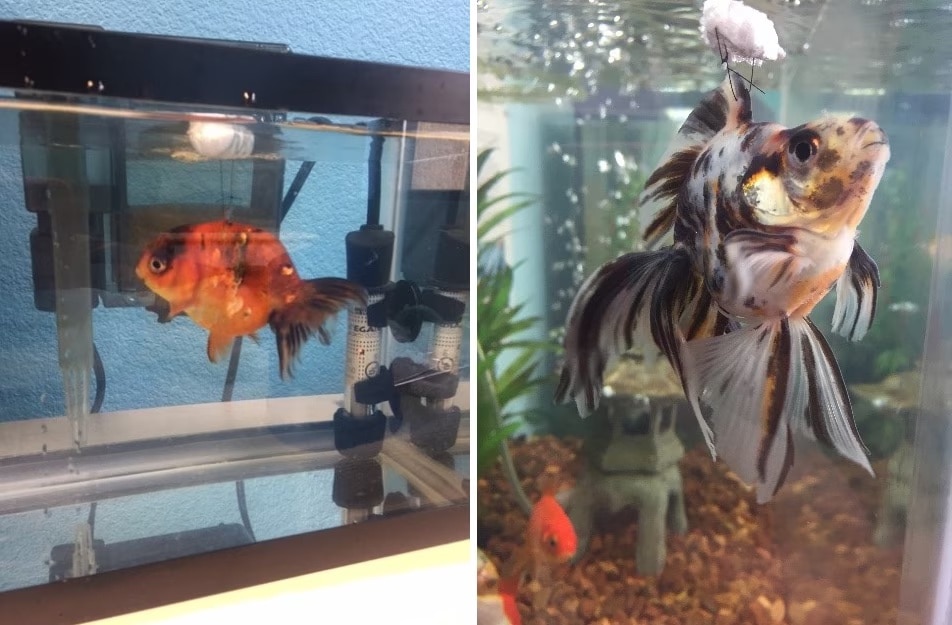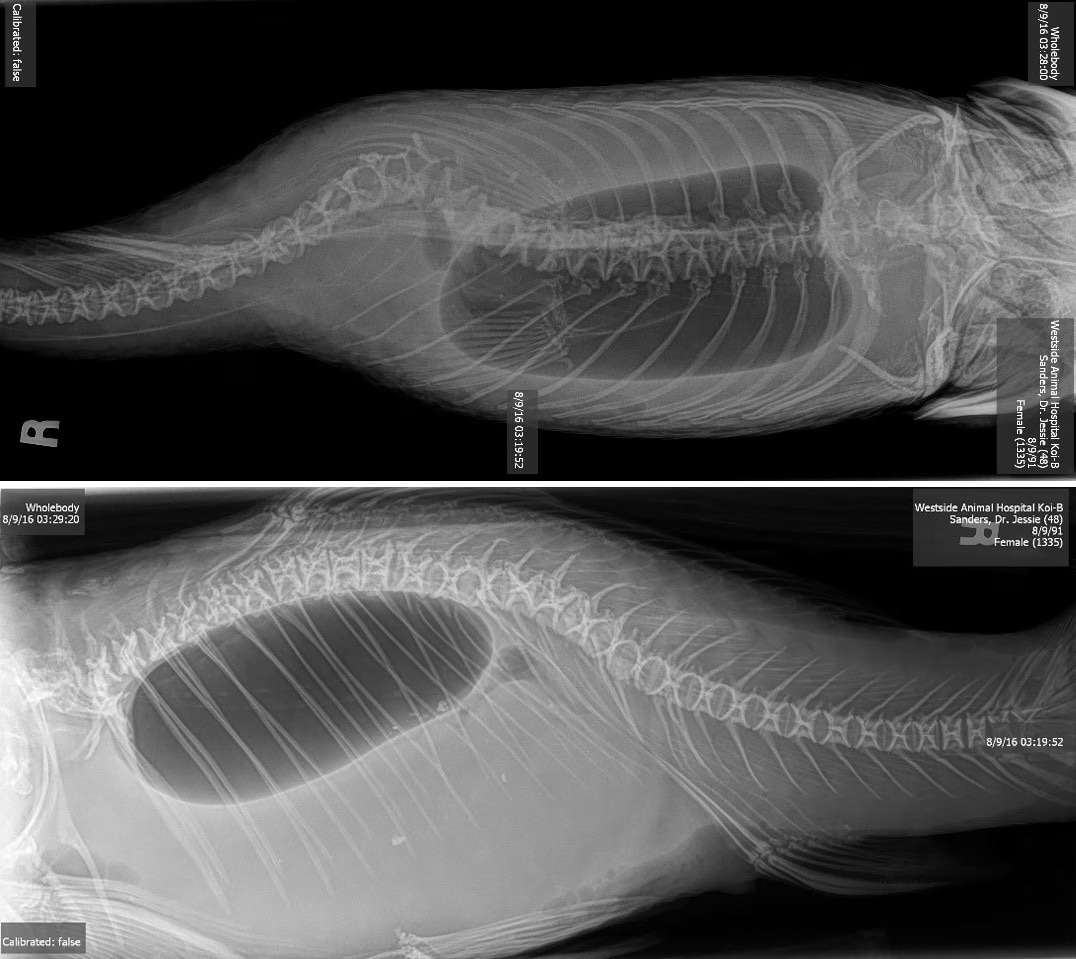Swim Bladder Disorders in Fish
What Is a Swim Bladder?
Bony fish have a specialized organ called a swim bladder. The purpose of this organ is to contain oxygen and gases to maintain neutral buoyancy at the fish’s desired depth. Think of it as a built-in diver’s buoyancy compensation device (BCD).
Fish can be categorized by the type of swim bladder they possess: a physostomes or a physoclists.
-
Fish with swim bladders that are physostomes fill their swim bladder by gulping air at the water’s surface. The air then quickly passes through a tube-like connection to the swim bladder.
-
In physoclist fish, a specialized gas gland allows gases dissolved in the blood to fill the swim bladder, keeping it full of gas.
The swim bladder is surrounded by a tough outer membrane and lies just under the spinal cord in the coelomic (body) cavity.
In addition to aiding posture and swimming ability, some fish use their swim bladder for sound production and detection. This organ is very significant in the overall health of fish. However, it’s not exempt from disease and dysfunction.
What Causes Swim Bladder Problems?
Many contributing factors can cause swim bladder disorders. One of the most overlooked components is water quality.
Poor water quality can result in sudden and chronic stress in fish. Stress causes disruption in regular normal body function (homeostasis), which can result in buoyancy disorders. If your fish presents with a buoyancy disorder, water quality should be checked immediately and corrected if necessary.
What Do Swim Bladder Disorders Look Like?
Swim bladder disorders can be identified based on multiple different observations. Most fish should maintain a neutral buoyancy within the water; they can move up and down the water column with ease when they are neutrally buoyant. Swim bladder disorders can cause fish to be positively buoyant or negatively buoyant.
-
Positively buoyant fish spend too much time at the top of the water column and cannot move down. They can also float with an abnormal posture, such as being inverted.
-
Negatively buoyant fish are observed at the bottom of your tank and are unable to surface or go in the higher portion of the water column. Fish with negative buoyancy disorders can have an abnormal posture as well.
How Veterinarians Diagnose Swim Bladder Disorders in Fish
If your fish needs to be seen by a doctor, make sure your veterinarian is comfortable working on aquatic animals. You can also find an aquatic veterinarian near you with help from databases such as:
The best way for your veterinarian to evaluate the swim bladder is by taking an X-ray.

X-rays can show the positioning and size of the swim bladder very clearly. They can also show if there is any fluid in the swim bladder, which is not a normal condition. Swim bladders can become displaced due to disease processes, which will be easily seen on X-rays.
Swim Bladder Disorders in Different Fish
Goldfish
Swim bladder disorders in goldfish are common due to their round body shape and (in the case of some fancy varieties) very curved spine. Goldfish are physostomous, meaning they have an open connection between their esophagus and swim bladder. This makes buoyancy disorders more complicated.

Sometimes diet is the cause, with excess air entering the gastrointestinal tract during feeding time. Switching to a sinking or neutrally buoyant diet may help correct mild disorders by keeping excess air from entering the duct to the swim bladder.
However, even with diet modification, swim bladder disorders in goldish may not be easily corrected. It’s always recommended that pet parents discuss their options with a veterinarian before attempting any buoyancy compensation devices, such as floats or weights. Tying foreign structures to a fish’s body can have catastrophic effects to its skin and mucus production. Only do so under a veterinarian’s guidance.
Koi
Koi fish are also prone to swim bladder disorders.

Koi with spinal deformities or neurologic damage may have secondary changes in their swim bladder. Swim bladder size and shape can be slowly altered over time to compensate for decreased mobility. These changes, which may become permanent, will allow a Koi with less mobility to survive in its home environment.
Cichlids
Chichlids are another group of fish prone to swim bladder disorders and can present either positively or negatively buoyant. Similar diagnostics as those described above should be performed to determine the cause of the swim bladder abnormality.
Swim Bladder Treatment
Depending on the cause, swim bladder disorders may be temporary or permanent. Steps to manage and treat the condition will need to be taken at home, and treatment depends on how the swim bladder disease affects your fish’s buoyancy.
Positively Buoyant Fish
With positively buoyant fish, some of the fish’s body can spend too much time above the water’s surface, making it important to keep their skin moist.
Do not cover the top of your tank to keep your fish submerged. This will result in decreased oxygen diffusion. Ask your veterinarian what can be applied to your fish’s skin to protect it from air.
Negatively Buoyant Fish
Negative buoyancy disorders, with a fish spending too much time close to the bottom of the aquarium or pond on its side, belly, or head, will need to be controlled with a clean, non-abrasive substrate, such as glass stones. It is critical that these tanks be kept very clean.
Preventing Swim Bladder Disorders
Buoyancy disorders in fish can be difficult to decipher and may have no permanent solution. If you have a fish that is starting to have problems swimming, check your water quality first. Water quality is often overlooked with swim bladder disorders. With physostomous fish, try a sinking or neutrally buoyant diet to keep excess air from getting into the swim bladder.
If the swimming problem persists, consult your local aquatic veterinarian to help set up X-rays to evaluate the swim bladder. Once the problem has been diagnosed and discussed, make a plan with your veterinarian for your fish’s future.
Fish can live long, happy lives with swim bladder disorders—it will just require a few changes to your tank and regimen.
Swim Bladder Disorders in Fish FAQs
How do you feed a fish with a swim bladder disorder?
Fish with compromised swimming ability will need help eating. With any buoyancy disorder, you will need to introduce hand-feeding. Be patient and try some tasty treats, such as small bits of shrimp, to entice your fish to eat from your hand.
When hand feeding, do not grab your fish! Bring the food to them in whatever position works best for them.
Once they have gotten the idea of hand-feeding, transition back to their regular diet. Fish are smart and will catch on to the new routine quickly.
How long can a fish live with swim bladder disease?
If your fish has a permanent swim bladder disorder, they can still live a full and happy life with lifestyle modifications.
Help us make PetMD better
Was this article helpful?
